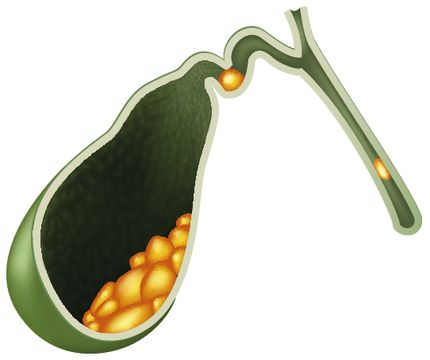I often meet people with symptoms which have been mistaken for gastric pain—mostly pain or discomfort in the upper abdomen—either around the midline or to the right. Many patients come to me for a second opinion, after a trial of medication for gastritis with no improvement, and may have even undergone examination which did not reveal any significant gastric problem. A number of them were suffering from gallstone disease.
Narein Mathur, 36, a Mumbai-based investment banker, would experience splitting pain in the abdomen. The busy professional blamed long working hours, inadequate workout sessions, and fast food, and almost accepted indigestion as the cause of the constant stomach-ache. He googled few remedies and experimented with certain analgesics. But the pain did not subside and started affecting his personal and professional life. His wife arranged for a consultation with me. Narein was diagnosed with gallstones.
In cases where the cholesterol-rich stones are only in the gall bladder, surgical removal of the entire gallbladder is possible to avoid gastrointestinal diseases, and a possible organ failure. However, this was a complicated condition as the stones were also stuck in the bile duct, which allows the bile juice to pass from the liver to the gallbladder to help digest food. The blockage in the bile duct made it impossible to break them with the help of conventional procedures such as external sound waves. Thus a minimally invasive procedure, to break the stones stuck in the passage and resume the normal functioning of the bile duct, had to be performed.
With advancements in biliary stone management, cholangioscopy, a minimally invasive procedure, allows doctors to remove gallstones, making complex surgeries possible.
When gallstones form in the gallbladder and pass into the common bile duct, via the cystic duct, it can cause obstruction in the flow of bile juice. Such a blockage in the duct leads to severe abdominal pain, high fever, and sometimes even organ failure. A patient must not ignore early signs of abdominal pain and consult a specialist at the earliest. Any delay in medical intervention can worsen a patient’s condition leading to gastrointestinal diseases. The good news is caregivers today have access to sophisticated technologies such as slimmer endoscopes, laser therapies and smarter catheters to carry out effective treatment of gallstones.
The advances in the field of biliary stone management is allowing caregivers to close the gaps left open by the traditional procedures. Cholangioscopy works on a 3D platform and does not depend on X-Ray guidance, thereby minimising radiation exposure to patients. From incisions in the abdomen and longer hospital stays to minimally invasive procedures and reduced bed rest, cholangioscopy has enhanced clinical efficacy and safety.


